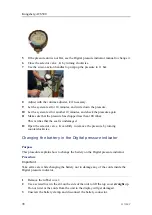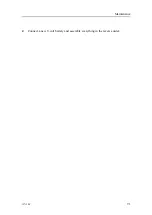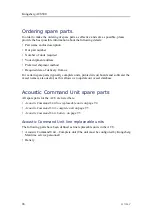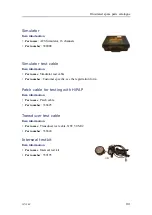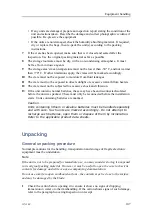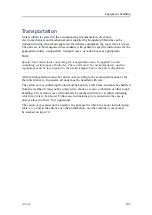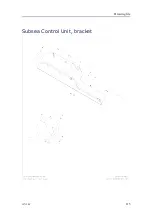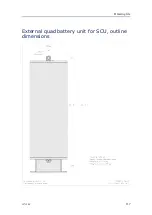
Disposal
At the end of the product lifetime, all Kongsberg Maritime products must be disposed in
an environmental friendly way.
Kongsberg Maritime offers a product recycling service and we recommend that this is
used. The service is described on
→Products →Services
→Product recycling
.
All electrical and electronic components must be disposed of separately from the
municipal waste stream via designated collection facilities appointed by the government
or local authorities. The correct disposal and separate collection of your old appliance
will help prevent potential negative consequences for the environment and human health.
This is a precondition for reuse and recycling of used electrical and electronic equipment.
For more detailed information about disposal of your old appliance, please contact your
local authorities or waste disposal service.
All disposal of mechanical, electromechanical, electronic and chemical waste – including
all types of batteries – must thus be disposed of according to national and international
rules and regulations. Observe the relevant Waste Electrical and Electronic Equipment
(WEEE) regulations.
Inspection
An inspection must be carried out immediately after the unit(s) have arrived at their
destination.
1
Check all wooden or cardboard boxes, plastic bags and pallets for physical damage.
Look for signs of dropping, immersion in water or other mishandling.
2
If damage is detected externally, you will have to open the packaging to check the
contents. Request a representative of the carrier to be present while the carton is
opened, so any transportation damage can be identified.
3
If any units are damaged, prepare an inspection report stating the condition of the
unit and actions taken. Describe the damage and collect photographic evidence if
possible. Send the inspection report to Kongsberg Maritime as soon as possible.
4
If the units are not damaged, check the humidity absorbing material. If required, dry
or replace the bags, then re-pack the unit(s) according to the packing instructions.
Lifting
A heavy crate will normally be marked with its weight, and the weights of other cartons
or crates will normally be entered on the packing list.
• You must always check the weight of a crate before you attempt to lift it.
• You must always use lifting apparatus that is approved and certified for the load.
397128/C
103
Summary of Contents for ACS500
Page 1: ...INSTRUCTION MANUAL ACS500 Acoustic Control System Gisma testport system...
Page 2: ......
Page 15: ...ACS500 System with interface cables 397128 C 13...
Page 38: ...Kongsberg ACS500 ACU Computer buttons on page 37 User interface on page 38 36 397128 C...
Page 71: ...Simulation and test 397128 C 69...
Page 113: ...Drawing file Dunking transducer unit outline dimensions 397128 C 111...
Page 114: ...Kongsberg ACS500 Acoustic Command Unit outline dimensions 112 397128 C...
Page 115: ...Drawing file Subsea Control Unit outline dimensions 397128 C 113...
Page 116: ...Kongsberg ACS500 Subsea Control Unit arrangement 114 397128 C...
Page 117: ...Drawing file Subsea Control Unit bracket 397128 C 115...
Page 118: ...Kongsberg ACS500 TDR30V 34GT Subsea transducer outline dimensions 116 397128 C...
Page 119: ...Drawing file External quad battery unit for SCU outline dimensions 397128 C 117...
Page 120: ...Kongsberg ACS500 Simulator outline dimensions 118 397128 C...
Page 138: ...Kongsberg ACS500 Appendix A Type approval certificate 136 397128 C...
Page 139: ...Appendix A Type approval certificate 397128 C 137...
Page 140: ...Kongsberg ACS500 138 397128 C...
Page 141: ...Appendix A Type approval certificate 397128 C 139...
Page 142: ...Kongsberg ACS500 140 397128 C...
Page 148: ...2016 Kongsberg Maritime...


